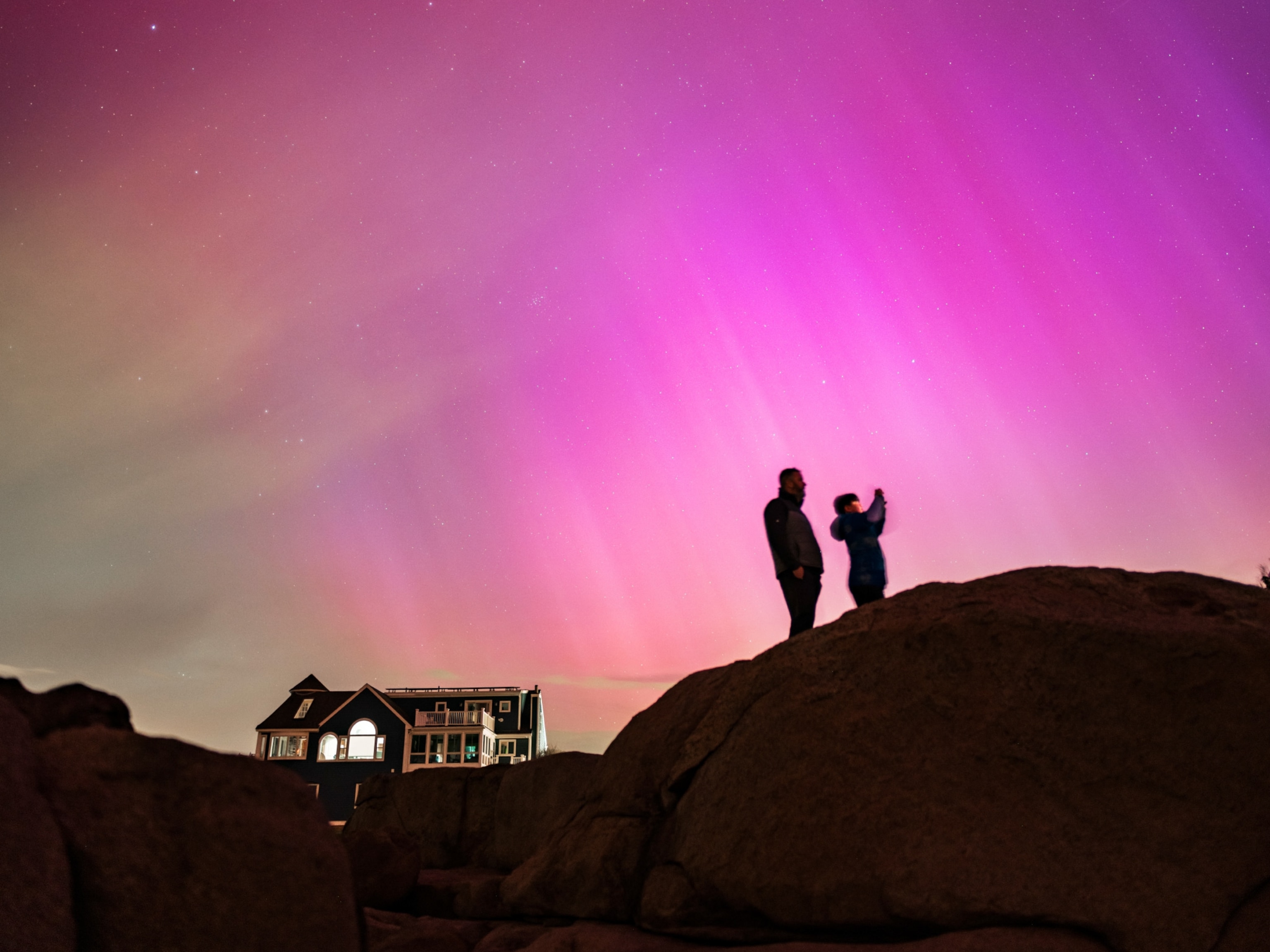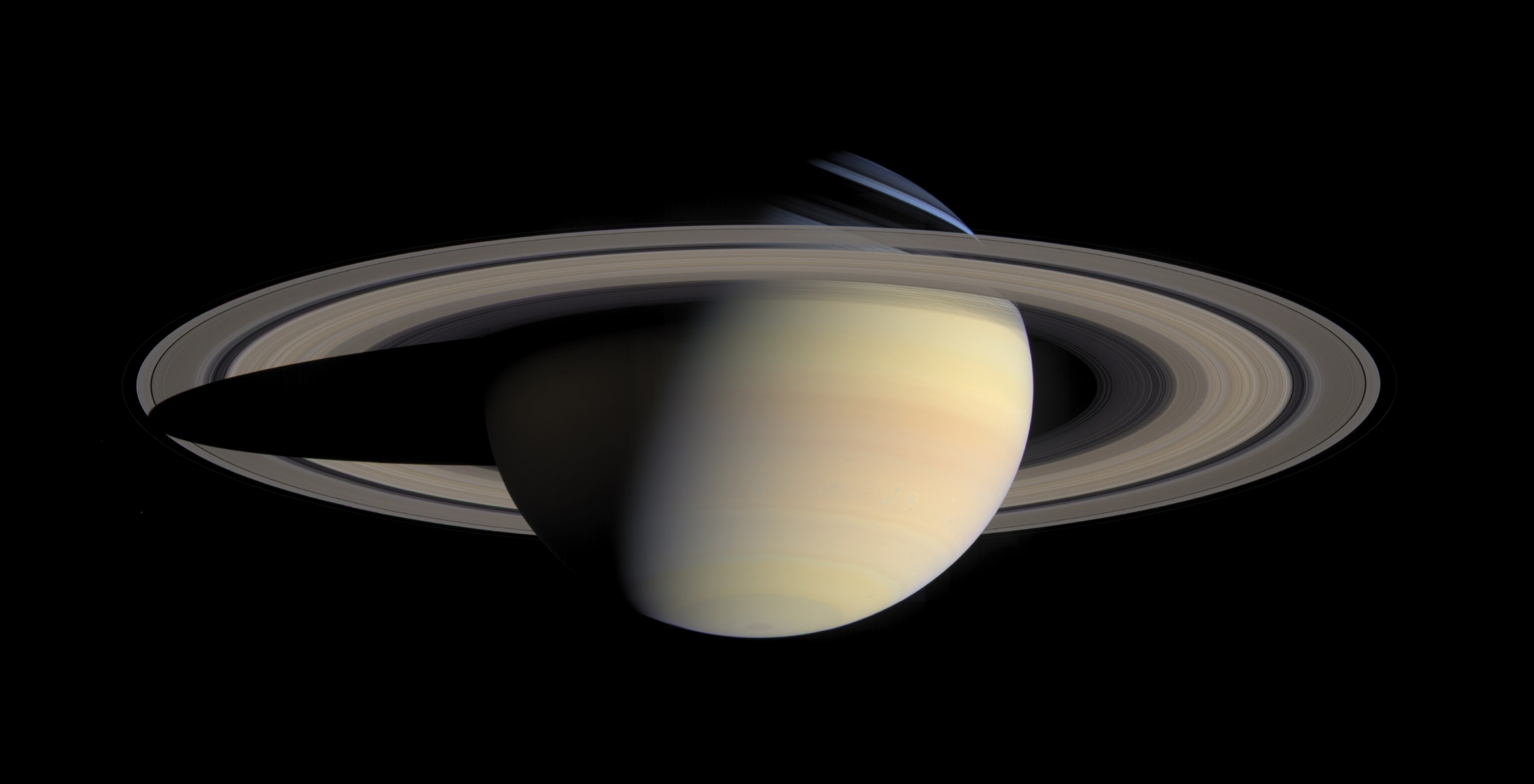
This Week's Night Sky: See Saturn Shine as Lord of the Rings
Saturn will appear as a cream-colored star to the naked eye, and telescope users can gaze at its sunlit rings.
The moon makes several planetary visits throughout the week, while on Friday, Saturn reaches its closest point to Earth for the year.
Moon and Mercury. About a half hour after sunset on Tuesday, May 19, use the razor-thin crescent moon to hunt down our solar system’s elusive innermost planet. Mercury is on the tail end of its best evening sky performance for the year, but there is still time to catch some decent views.
Face the northwestern horizon—you'll find Mercury sitting about 10 degrees below and to the right of the moon, equal to about the width of your fist at arm's length. The faint, little planet will be a bit tricky to find, though, because it is very close to the horizon, only about 7 degrees altitude. To pick out the star-like world, use binoculars to scan the sky below the moon.
Moon and Venus. After nightfall on Wednesday, May 20, the Earth’s lone natural satellite joins the goddess of love and the Gemini twins in the northwestern sky. The waxing crescent moon will be directly below super-bright Venus, which in turn will appear tucked beneath the two bright stars Pollux and Castor, the leading members in the zodiacal constellation Gemini.
The following evening, Thursday, the cosmic show continues with the moon rising even closer to and to the left of Venus. The two objects will appear about 9 degrees apart, but their proximity is just an optical illusion as the moon is 1.3 light-seconds away from Earth and Venus is 7 light-minutes distant. These distances pale in comparison, however, to Gemini’s stellar pair, which sit 34 and 51 light-years away.
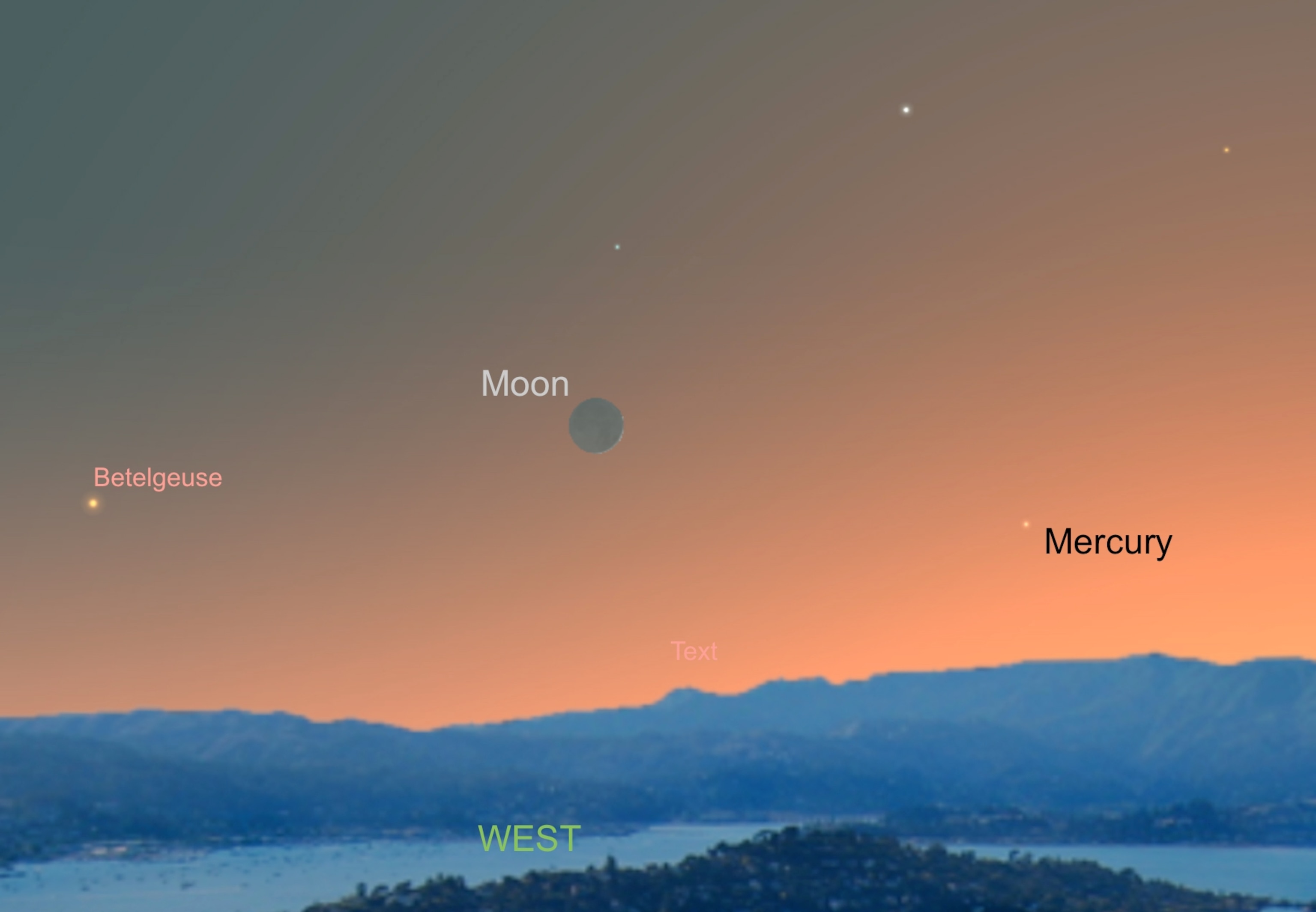
Saturn in prime time. On Friday, May 22, the ringed planet reaches opposition, when it is directly opposite the sun from Earth’s perspective. Because this will be the closest Saturn gets to Earth this year, it will be especially bright, making this an ideal time to take a gander at the gassy planet.
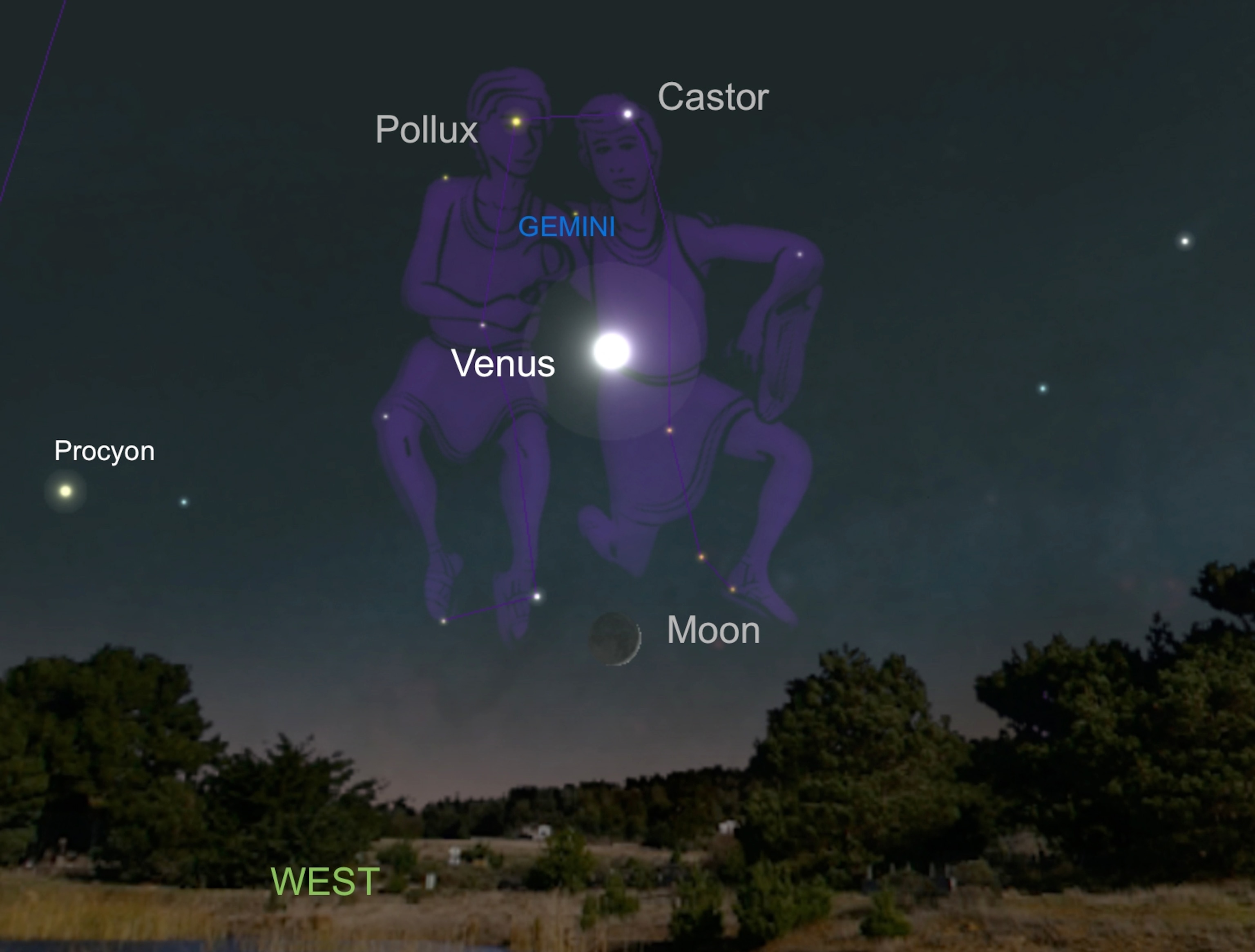
The lord of the rings will rise in the east at sunset and set in the west at sunrise; at midnight, you will find it due south. In late evening, Saturn will shine like a brilliant, cream-colored star in the dim zodiacal constellation Libra in the low southeast. It will be a tad fainter than its neighbor to the lower left, the orange star Antares.
During opposition, the planet’s rings seem to surge in brightness due to sunlight directly backscattering through the countless chunks of ice particles. This should make for an awesome sight for telescope-users.
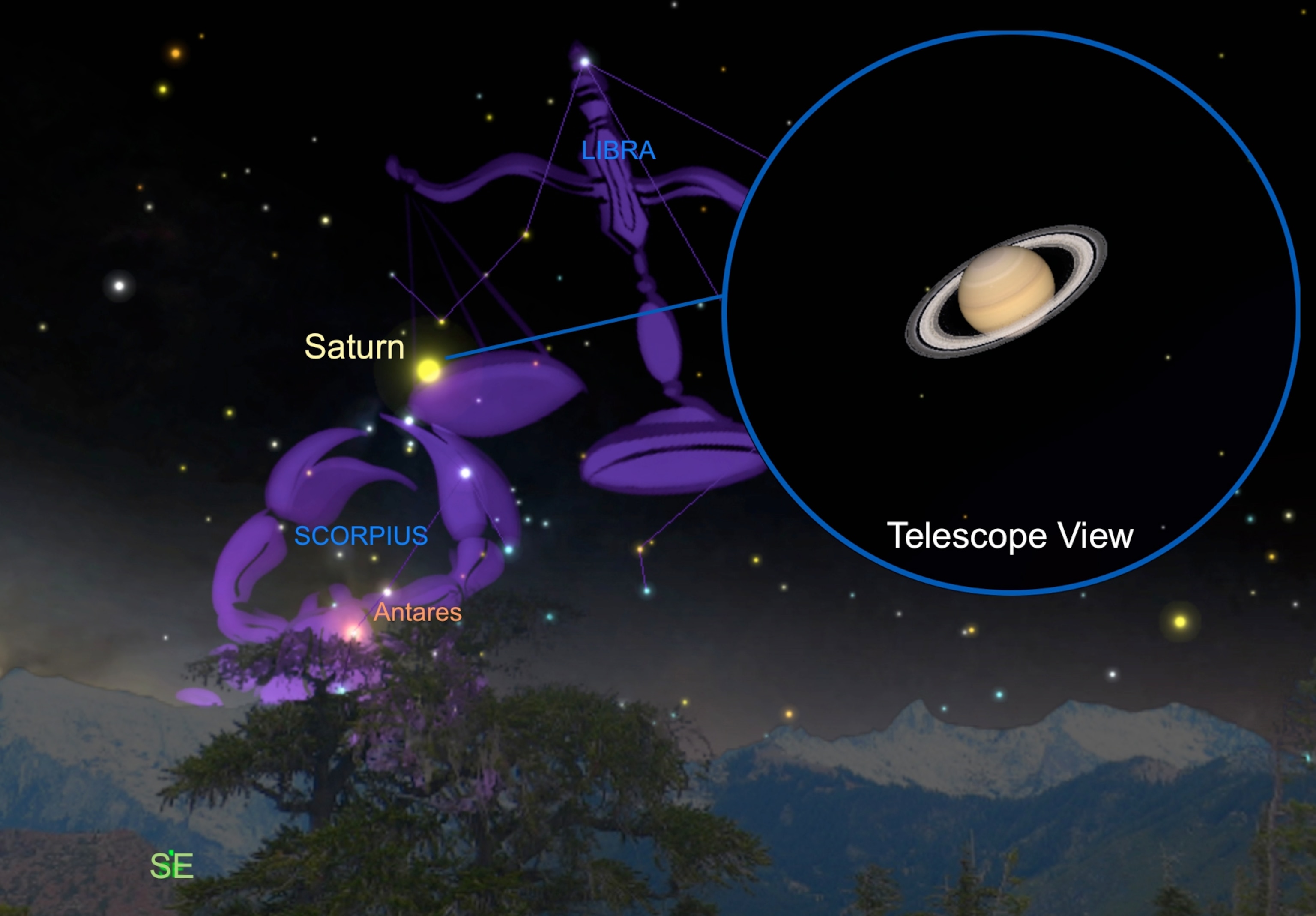
Moon joins Jupiter. The waxing crescent moon makes its final celestial pit stop of the week at Jupiter’s doorstep on Saturday, May 23. The pair will be separated by only 5 degrees, equal to about the width of your middle three fingers held at arm’s length.
This close encounter should make for a great photo opportunity. And a small telescope trained on the gas giant will reveal the planet’s retinue of four moons as well as atmospheric detail on the the planet’s disk.
Happy hunting!

Follow Andrew Fazekas, the Night Sky Guy, on Twitter, Facebook, and his website.

